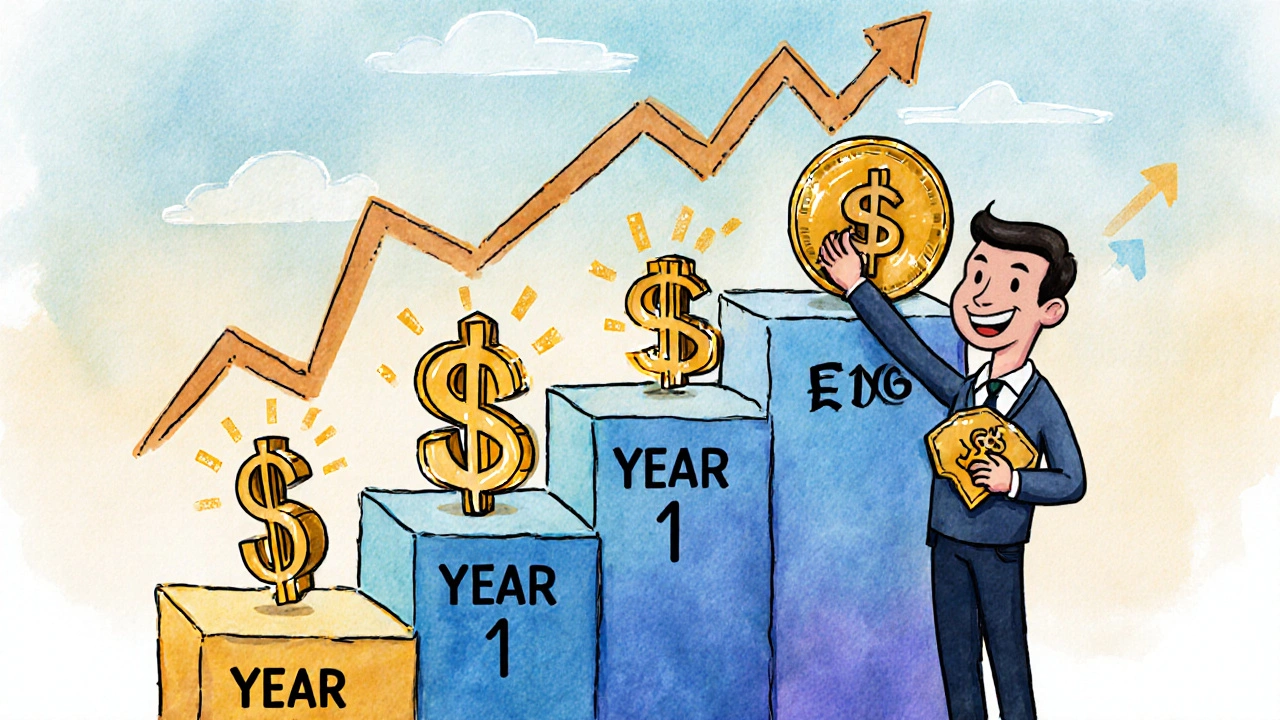Bond Ladders: How to Build Steady Income with Fixed-Income Strategies
When you build a bond ladder, a portfolio of bonds with staggered maturity dates that release principal at regular intervals. Also known as maturity laddering, it’s a simple way to turn bonds into a reliable income stream while avoiding the risk of locking in low rates for too long. Unlike buying one long-term bond and hoping interest rates don’t rise, a bond ladder lets you reinvest cash as it becomes available—so you’re never stuck with outdated yields.
It works like this: you spread your money across bonds that mature in 1, 2, 3, 4, and 5 years. When the one-year bond matures, you reinvest that money into a new five-year bond. Now your ladder has a bond maturing every year. This keeps your cash flowing and lets you take advantage of rising rates without timing the market. It’s not flashy, but it’s one of the few strategies that actually protects you when inflation spikes or the Fed hikes rates. And you don’t need a huge portfolio to start—one $5,000 bond per rung is enough.
Related concepts like bond ETFs, exchange-traded funds that hold a basket of bonds and trade like stocks. Also known as fixed-income ETFs, they offer diversification without the hassle of buying individual bonds. But they don’t give you the same control over maturity dates. And when interest rates climb, bond ETFs can drop in value because their holdings are constantly being rebalanced. A bond ladder, on the other hand, lets you hold to maturity—you get your full principal back, no matter what the market does. That’s why retirees, cautious investors, and anyone who hates volatility rely on it.
Then there’s interest rate risk, the chance that rising rates will make your existing bonds worth less if you sell before they mature. Also known as price sensitivity to rates, it’s the silent killer of passive bond portfolios. A bond ladder reduces this risk by ensuring you’re not holding all your money in long-term bonds. You’re always ready to lock in higher yields as older bonds mature. And if you’re worried about defaults, you can build your ladder with U.S. Treasuries—zero credit risk, just pure interest rate timing.
You’ll find posts here that break down exactly how to set up a ladder with real examples, compare the best platforms for buying individual bonds, and show you how to adjust your ladder when rates move. Some posts even compare bond ladders to CD ladders or dividend stocks. There’s no fluff—just clear steps, real numbers, and what actually works for women managing their own money. Whether you’re new to fixed income or looking to refine your strategy, you’ll walk away knowing exactly how to make your bonds work harder for you.
Bond Ladders: How to Build Steady Income and Lower Risk in Today's Market
Bond ladders offer steady income and lower risk by spreading investments across bonds with staggered maturities. Learn how to build one in today’s high-rate environment and why it beats bond funds for retirees and conservative investors.
View More